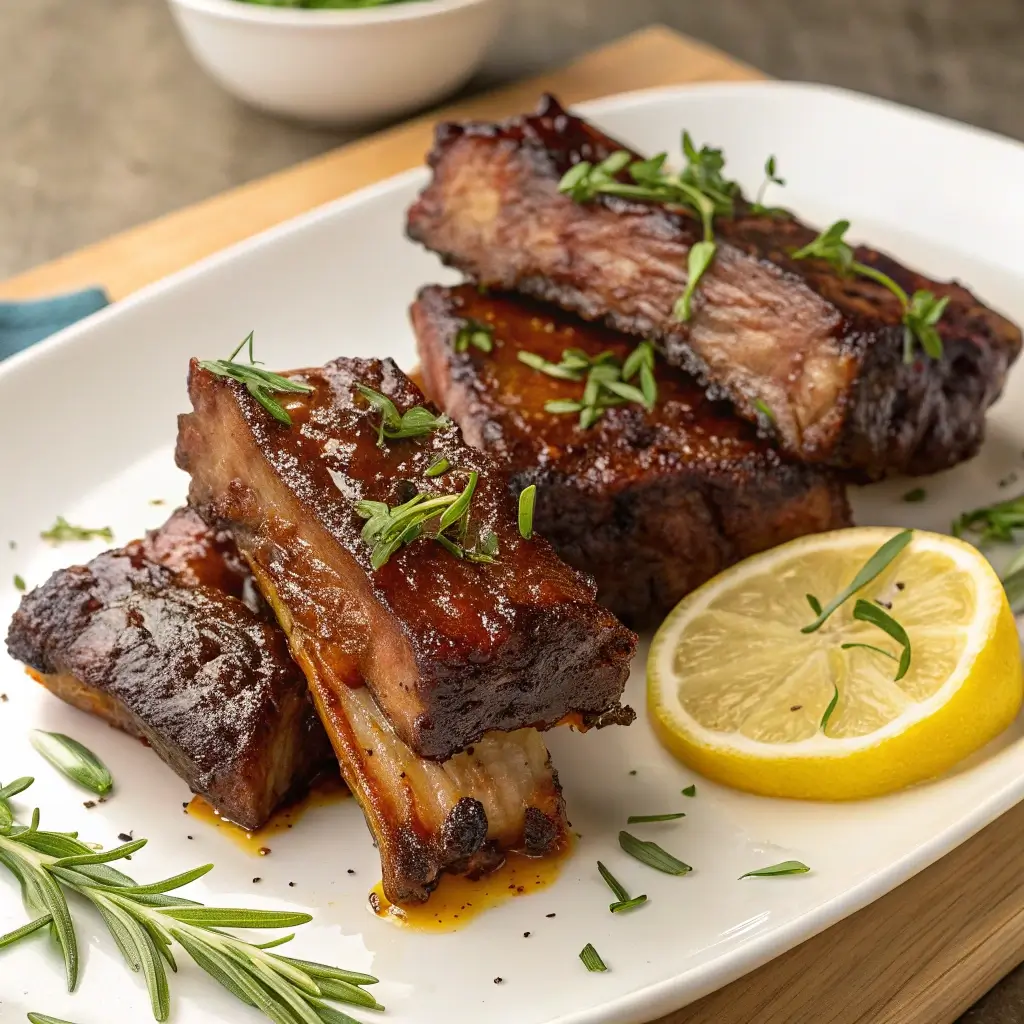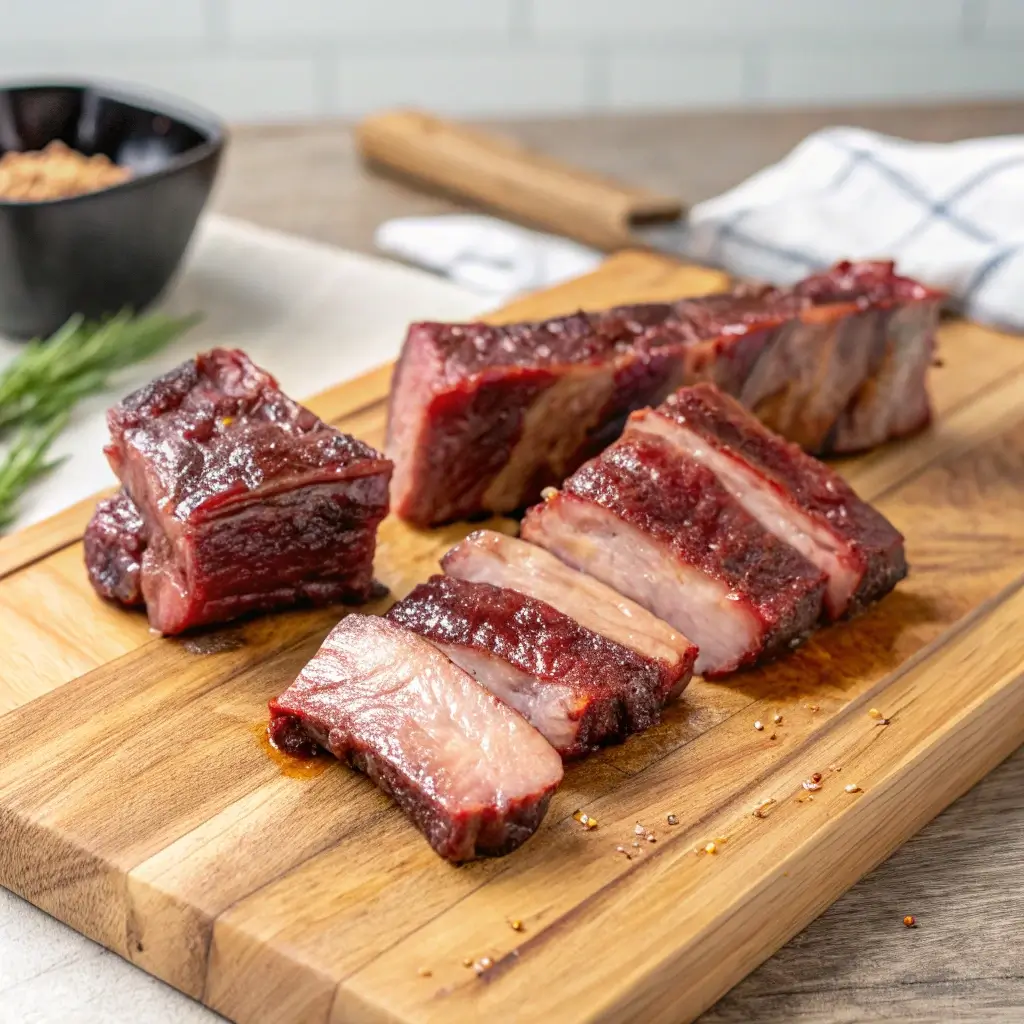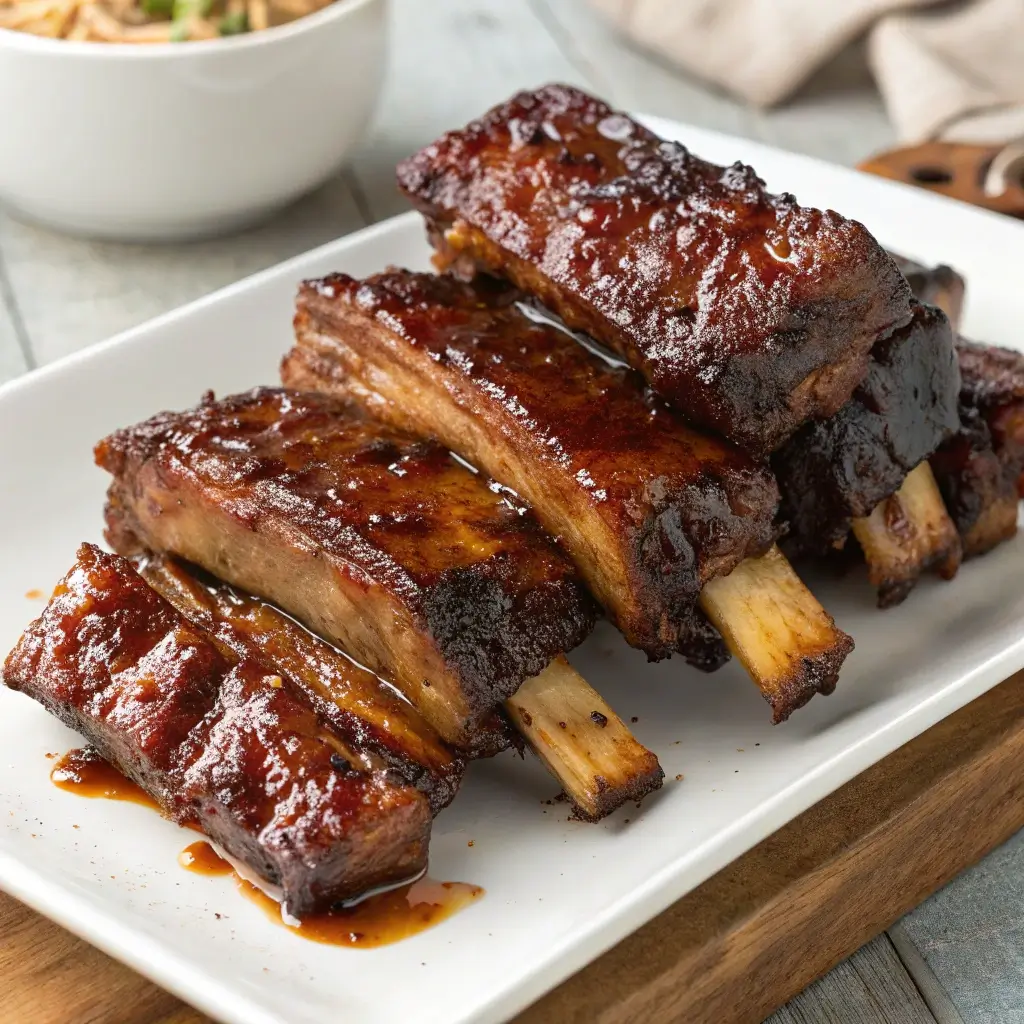When it comes to beef, ribs are a favorite for their rich flavor and tender texture. However, not all ribs are created equal. Beef ribs and short ribs are two popular cuts that often confuse home cooks and barbecue enthusiasts alike. While they come from the same animal, they differ in location, preparation, and cooking methods. In this guide, we’ll break down the differences between beef ribs and short ribs, explore their flavor profiles, and share tips on how to cook them to perfection.

Beef ribs vs short ribs are both prized for their rich, meaty flavor and versatility in the kitchen. However, their differences lie in their location on the cow, the amount of meat and fat they contain, and how they’re best prepared. Whether you’re planning a backyard barbecue or a cozy dinner, understanding these cuts will help you choose the right one for your recipe. This guide will walk you through everything you need to know about beef ribs and short ribs, from their unique characteristics to the best ways to cook and serve them.
Table of Contents
Why You’ll Love This
Here’s why you’ll love cooking and eating beef ribs and short ribs:
- Rich Flavor: Both cuts are packed with deep, beefy flavors that are enhanced by slow cooking or grilling.
- Versatility: They can be prepared in a variety of ways, from smoking and grilling to braising and roasting.
- Comfort Food: These ribs are the ultimate comfort food, perfect for family dinners or special occasions.
- Customizable: You can experiment with different seasonings, sauces, and cooking methods to create your perfect dish.
- Crowd-Pleaser: Whether you’re hosting a barbecue or a dinner party, ribs are always a hit.
Ingredients

Here’s what you’ll need to cook beef ribs or short ribs:
For Beef Ribs:
- 1 rack of beef back ribs or plate ribs
- 2 tablespoons olive oil
- 1/4 cup dry rub (salt, pepper, paprika, garlic powder, brown sugar, etc.)
- 1 cup barbecue sauce (optional)
For Short Ribs:
- 2-3 lbs beef short ribs (English or Flanken cut)
- 2 tablespoons olive oil
- 1 onion, chopped
- 3 cloves garlic, minced
- 2 cups beef broth
- 1 cup red wine (optional)
- 2 tablespoons soy sauce
- 1 tablespoon tomato paste
- 1 teaspoon thyme or rosemary
Variations
Both beef ribs and short ribs can be prepared in a variety of ways to suit your taste. Here are some ideas:
For Beef Ribs:
- Smoked Beef Ribs: Use a smoker and your favorite wood chips for a classic barbecue flavor.
- Grilled Beef Ribs: Marinate the ribs in a tangy sauce and grill them over medium heat.
- Oven-Roasted Beef Ribs: Season with a dry rub and roast in the oven until tender.
For Short Ribs:
- Braised Short Ribs: Cook low and slow in a flavorful liquid like red wine or beef broth.
- Korean BBQ Short Ribs: Use Flanken-cut ribs and marinate in a soy sauce-based marinade before grilling.
- Slow Cooker Short Ribs: Let your slow cooker do the work for a hands-off meal.
Steps
Here’s how to cook beef ribs and short ribs to perfection:
Cooking Beef Ribs:
- Prepare the Ribs: Remove the membrane from the back of the ribs and pat them dry.
- Season: Rub the ribs with olive oil and your dry rub, ensuring they’re evenly coated.
- Smoke or Grill: Smoke at 225°F (107°C) for 5-6 hours or grill over indirect heat for 1-2 hours, basting with barbecue sauce if desired.
- Rest and Serve: Let the ribs rest for 10-15 minutes before slicing and serving.
Cooking Short Ribs:
- Sear the Ribs: Heat olive oil in a large pot or Dutch oven and sear the ribs on all sides until browned.
- Add Aromatics: Sauté onions and garlic until softened, then add tomato paste, soy sauce, and herbs.
- Braise: Pour in beef broth and red wine, then cover and simmer on the stovetop or bake in the oven at 325°F (160°C) for 2.5-3 hours.
- Serve: Remove the ribs from the liquid and serve with the reduced sauce.
Tips and Tricks
Here are some tips to ensure your ribs turn out perfectly:
- Choose the Right Cut: Select beef ribs for smoking or grilling and short ribs for braising or slow cooking.
- Season Generously: Use a dry rub or marinade to enhance the flavor.
- Low and Slow: Cook ribs at low temperatures for longer periods to tenderize the meat.
- Rest Before Serving: Let the ribs rest for 10-15 minutes after cooking to retain their juices.
- Use a Meat Thermometer: Ensure beef ribs reach an internal temperature of 203°F (95°C) and short ribs reach 200°F (93°C) for optimal tenderness.
How to Serve
Here are some serving suggestions for beef ribs and short ribs:
- Beef Ribs: Serve with classic barbecue sides like coleslaw, cornbread, or baked beans.
- Short Ribs: Pair with mashed potatoes, polenta, or roasted vegetables for a hearty meal.
- Garnishes: Add fresh herbs, pickled vegetables, or a drizzle of sauce for extra flavor.
Make Ahead and Storage
Both beef ribs and short ribs can be prepared ahead of time:
- Make Ahead: Cook the ribs and store them in the fridge for up to 3 days. Reheat gently before serving.
- Storage: Store leftover ribs in an airtight container in the fridge for up to 4 days or freeze for up to 3 months.
- Reheating: Reheat ribs in the oven at 300°F (150°C) wrapped in foil to retain moisture.

FAQs
1. Can I use beef ribs and short ribs interchangeably?
While they can both be used in similar dishes, their textures and cooking times differ. Beef ribs are better for smoking, while short ribs excel in braising.
2. Which cut is more tender?
Short ribs are generally more tender due to their higher fat content and connective tissue.
3. Are beef ribs or short ribs more expensive?
Short ribs are often more expensive because of their rich flavor and versatility.
4. Can I cook beef ribs in a slow cooker?
Yes, but they may not develop the same smoky flavor as when smoked or grilled.
5. What’s the best way to reheat ribs?
Reheat ribs in the oven at 300°F (150°C) wrapped in foil to retain moisture.
6. Can I use boneless short ribs?
Yes, boneless short ribs are easier to cook and slice, but they may lack the depth of flavor that bones provide.
Conclusion
Both beef ribs and short ribs offer unique flavors and textures that can elevate any meal, making them a favorite among home cooks and barbecue enthusiasts alike. Whether you prefer the bold, smoky taste of beef ribs or the rich, melt-in-your-mouth tenderness of short ribs, understanding their differences will help you choose the right cut for your recipe. Beef ribs, with their larger size and meaty texture, are perfect for smoking, grilling, or roasting, delivering a satisfying chew and deep, beefy flavor. On the other hand, short ribs, known for their marbling and connective tissue, shine when braised or slow-cooked, resulting in a succulent, fall-off-the-bone experience.
The versatility of these cuts allows for endless creativity in the kitchen. From classic barbecue-style beef ribs to Korean-inspired grilled short ribs, there’s a preparation method to suit every palate. Pair them with your favorite sides, such as coleslaw, mashed potatoes, or roasted vegetables, for a complete and hearty meal. Whether you’re hosting a summer barbecue, preparing a cozy winter dinner, or simply craving comfort food, ribs are always a crowd-pleaser.
So, fire up the grill, preheat the oven, or grab your slow cooker—it’s time to enjoy some delicious ribs! With the right techniques and a little patience, you’ll create a dish that’s sure to impress your family and friends.
